Navigating the intricacies of volatility indicators in trading can be both challenging and rewarding for investors seeking to optimize their strategies. The top ten easy-to-follow guides on volatility indicators offer a wealth of knowledge on deciphering market fluctuations and seizing opportunities amidst volatility.
From fundamental concepts to advanced applications, these guides present a roadmap for traders to enhance their decision-making processes and potentially boost their trading outcomes. Understanding the nuances of volatility indicators can arm investors with valuable insights into market behavior and equip them with the tools needed to navigate the dynamic landscape of trading.
What Are Volatility Indicators?
Volatility indicators are essential statistical tools utilized to analyze the variability present in trading price series across financial markets. These indicators help traders assess the uncertainty or risk associated with price changes in various financial instruments such as stocks, futures, and forex. Three prominent volatility indicators include Bollinger Bands, Average True Range (ATR), and the Relative Volatility Index.
Bollinger Bands, created by John Bollinger, consist of a simple moving average and two standard deviations plotted above and below the average. They dynamically adjust to price movements, expanding during periods of high volatility and contracting during low volatility. ATR, developed by J. Welles Wilder, measures market volatility by calculating the average range between the high and low prices over a specific period. It aids traders in setting stop-loss levels and determining potential price targets. The Relative Volatility Index compares a security's recent gains and losses to assess if it is overbought or oversold, providing insights into potential trend reversals.
Understanding ATR Indicator

Within the realm of financial analysis, the ATR indicator serves as a pivotal tool for evaluating market volatility. The ATR, or Average True Range, quantifies the average range between high and low prices over a specified period, indicating the level of price fluctuation.
By understanding the ATR, traders gain insights into the volatility of an asset, enabling them to make informed decisions regarding risk management and trade execution. A higher ATR value signifies increased volatility, suggesting larger price movements and potential risks. Conversely, a lower ATR value indicates a more stable market environment with smaller price fluctuations.
Traders commonly use the ATR to set appropriate stop-loss levels, determine position sizes, and gauge the overall market conditions. Mastering the interpretation and application of the ATR indicator empowers traders to refine their strategies, improve risk assessment, and navigate market volatility more effectively.
Exploring VIX Volatility Index
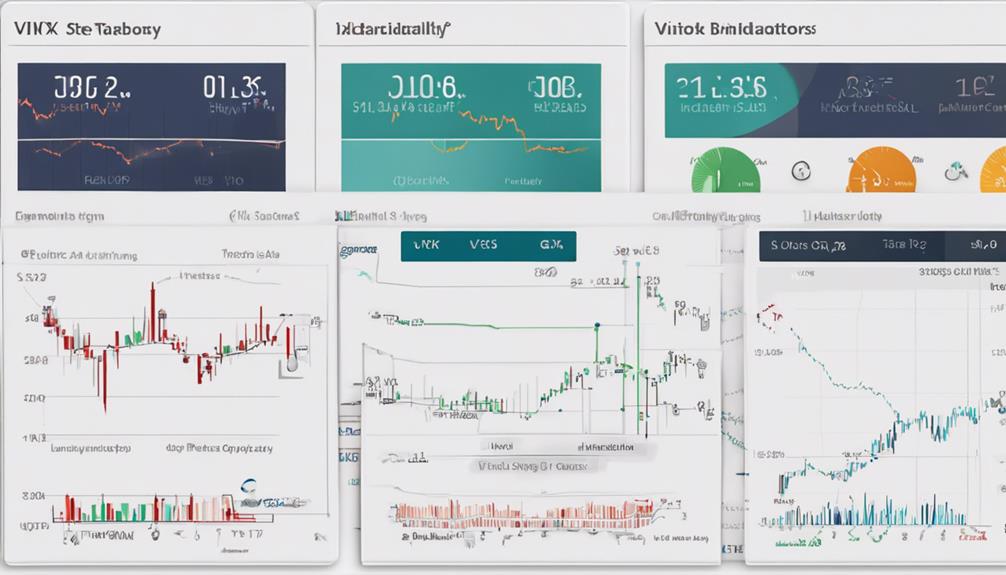
The VIX Volatility Index, often referred to as the 'fear index' in financial markets, plays a crucial role in measuring market expectations and tracking S&P 500 options prices. Traders utilize the VIX to gauge market sentiment and potential volatility. When the VIX values rise, it typically indicates heightened market volatility and uncertainty, often coinciding with market downturns.
Values above 30 are commonly seen as a sign of increased market volatility. Understanding the VIX is essential for traders as it provides insights into the market's fear levels and helps in assessing the potential risks and opportunities. By monitoring the VIX, traders can make informed decisions and adjust their strategies accordingly based on the prevailing market conditions.
As a widely recognized indicator of market volatility, the VIX serves as a valuable tool for traders looking to navigate the financial markets effectively.
Utilizing Keltner Channel Indicator
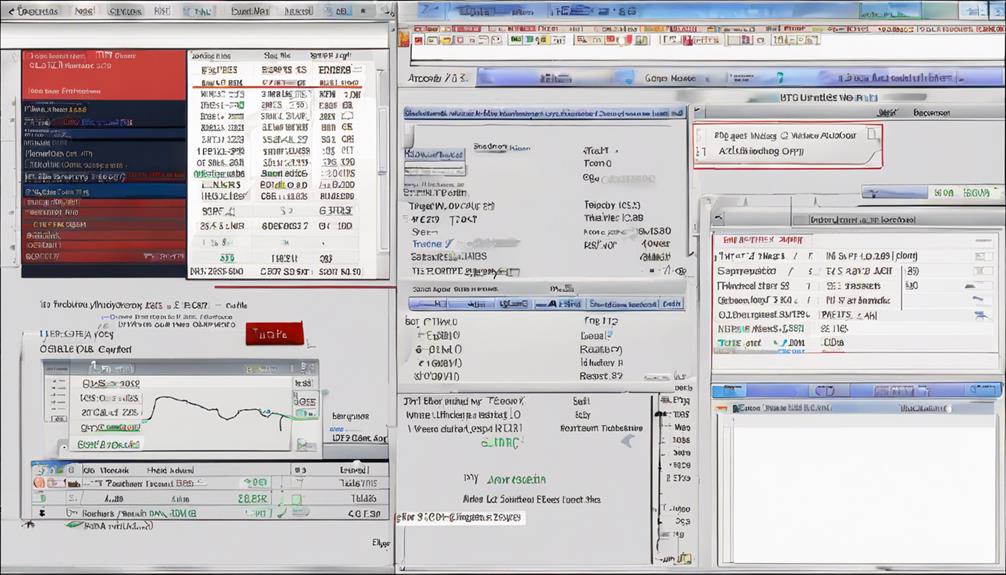
The Keltner Channel Indicator is a volatility tool that utilizes the Average True Range (ATR) to create bands around price action. Traders can use these bands to identify potential support and resistance levels, aiding in decision-making processes.
Customizable settings enable traders to tailor the indicator to their specific trading strategies and preferences.
Keltner Channel Basics
Utilizing the Keltner Channel Indicator provides traders with a comprehensive tool for assessing price volatility based on the average true range (ATR) through the calculation of bands around price movements.
This indicator automatically plots three lines on the chart, with the middle line usually representing an exponential moving average of the asset's price. The upper and lower lines are typically set at a multiple of the ATR above and below the middle line, serving as dynamic levels of support and resistance.
Application in Trading
Analyzing price movements using the Keltner Channel indicator provides traders with valuable insights into market volatility and potential trading opportunities. Unlike Bollinger Bands, the Keltner Channel indicator uses the Average True Range (ATR) to establish bands around price, indicating support and resistance levels.
By customizing the indicator settings, such as using common values like 50 and 5 for different timeframes, traders can tailor their analysis to suit their trading strategies. This tool aids in identifying price trends, potential breakouts, and shifts in market volatility, offering a comprehensive view of price dynamics.
The automated calculation of the Keltner Channel on trading platforms enhances its accessibility and convenience for traders seeking to capitalize on price volatility in the market.
Analyzing Donchian Channel Indicator
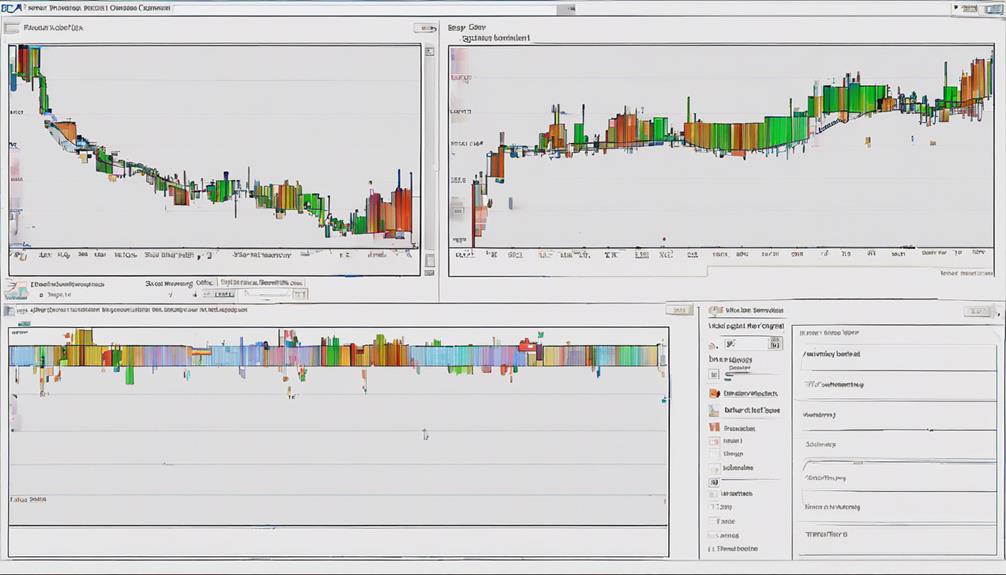
The Donchian Channel Indicator offers traders a structured approach to analyzing price movements through its upper, lower, and mid-range bands.
By understanding the basics, interpreting signals effectively, and applying real-world examples, traders can make informed decisions based on price extremes.
Utilizing these points can enhance traders' abilities to identify trends and potential reversal points in the market.
Donchian Channel Basics
Developed by Richard Donchian, the Donchian Channel indicator serves as a valuable tool for identifying price extremes in market movements.
- The Donchian Channel comprises three lines: upper, lower, and mid-range bands derived from historical price highs and lows.
- Traders utilize the Donchian Channel to pinpoint potential breakout or breakdown points in price movements.
- This indicator aids in evaluating trend strength and potential reversal points within the market.
- Donchian Channels provide a visual representation of price volatility, assisting traders in making well-informed decisions.
Interpretation Tips
Utilizing the Donchian Channel Indicator effectively requires a keen understanding of price extremities and trend dynamics. This indicator is instrumental in identifying price extremes by establishing upper, lower, and mid-range bands.
Traders can interpret the Donchian Channel Indicator to assess support and resistance levels, which are crucial in determining potential trend reversals. By analyzing the positioning of the bands, traders can gauge the strength or weakness of the current price movement.
Understanding these dynamics aids in decision-making during volatile market conditions. The Donchian Channel Indicator provides a clear visual representation of price dynamics, empowering traders to make well-informed choices based on the indicator's insights.
Real-World Application Examples
An examination of practical applications reveals the efficacy of the Donchian Channel Indicator in capturing market trends and identifying breakout opportunities.
- The Donchian Channel Indicator helps traders spot potential entry points when the price breaks above the upper band.
- It assists in identifying exit points when the price falls below the lower band, signaling a potential trend reversal.
- Traders use the mid-range band to assess the market's overall sentiment and the strength of the current trend.
- By highlighting price volatility, the Donchian Channel Indicator aids traders in making informed decisions to capitalize on market movements effectively.
Applying Chaikin Volatility Indicator
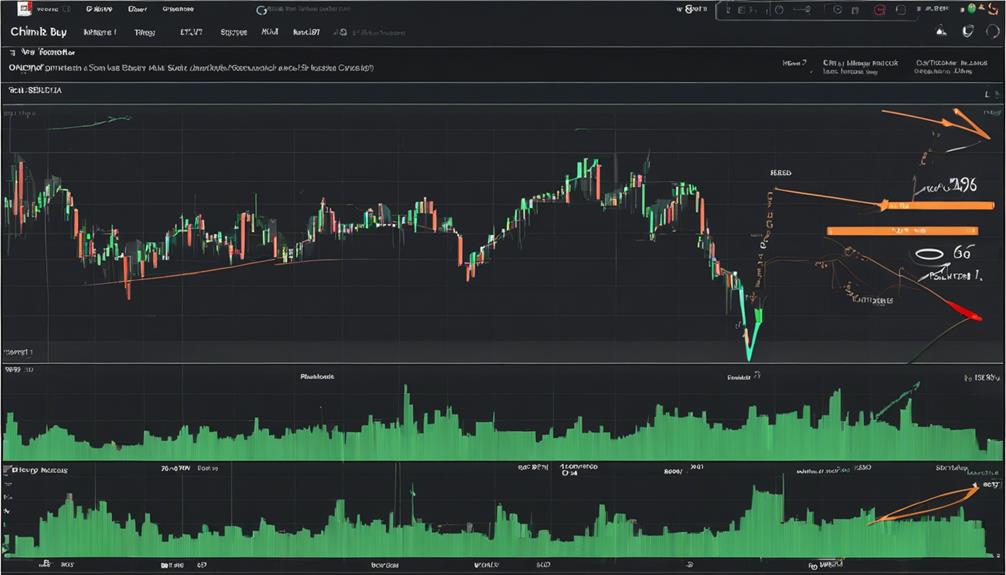
The application of the Chaikin Volatility Indicator involves analyzing the difference between high and low prices during a specified timeframe to gauge market volatility and potential shifts in trends. This indicator serves as a valuable measure of market volatility, helping traders identify periods of increased price fluctuation.
By calculating the variance between high and low prices and normalizing it against their sum, the indicator provides insights into the intensity of price movements. Traders can utilize the Chaikin Volatility Indicator in conjunction with other technical tools such as moving averages to confirm trends and evaluate risk levels.
Its application aids in assessing the overall market conditions, enabling traders to make well-informed decisions regarding entry and exit points. The Chaikin Volatility Indicator equips traders with a quantitative method to interpret market dynamics and anticipate potential trend reversals, enhancing their ability to navigate the complexities of the financial markets efficiently.
Insights on Twiggs Volatility Indicator
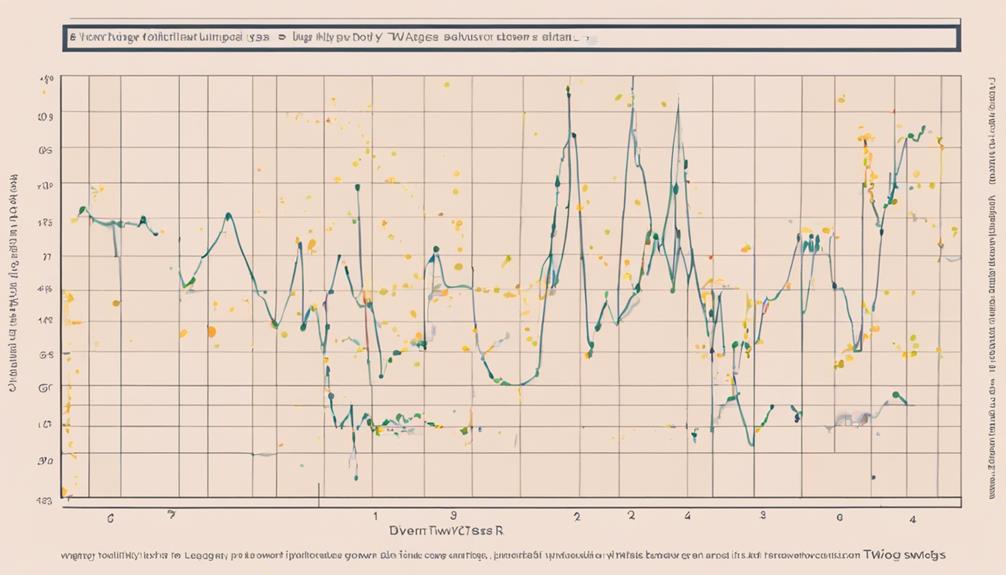
The Twiggs Volatility Indicator provides traders with a quantitative measure of market volatility, aiding in trend identification and risk assessment. By leveraging the Average True Range (ATR), this indicator offers insights into market behavior and trend confirmation.
Integrating the Twiggs Volatility Indicator into a comprehensive technical analysis toolkit can enhance traders' abilities to make informed decisions and optimize risk management strategies.
Twiggs Volatility Indicator Overview
Utilizing a sophisticated algorithm, the Twiggs Volatility Indicator offers traders valuable insights into market volatility dynamics.
- Measures market volatility by analyzing price ranges.
- Identifies periods of high and low volatility for trading opportunities.
- Based on the True Range and a smoothing component for clearer signals.
- Used to assess market risk changes and optimize trading strategies.
Traders often combine the Twiggs Volatility Indicator with other technical tools for comprehensive market analysis. This indicator provides a systematic approach to understanding volatility patterns, aiding traders in making informed decisions based on market risk assessments.
Calculation Method Explained
Understanding the intricacies of the Twiggs Volatility Indicator's calculation method provides traders with valuable insights into market volatility dynamics. Unlike Bollinger Bands, which rely on standard deviations, the Twiggs Volatility Indicator uses its unique formula based on price movements to assess market volatility.
By tracking these changes over time, traders can gauge shifts in market risk levels and potential trend reversals. Combining the Twiggs Volatility Indicator with trend-following tools enhances the overall analysis, offering a comprehensive view of market conditions.
This indicator's ability to provide a clear picture of volatility changes aids traders in making informed decisions and implementing effective risk management strategies in their trading activities.
Practical Application Tips
Drawing on the calculation method of the Twiggs Volatility Indicator, practical application tips offer traders valuable insights into effectively utilizing this volatility indicator in their market analysis strategies. When applying the Twiggs Volatility Indicator:
- Monitor Volatility Changes: Keep an eye on the indicator to identify shifts in market volatility.
- Combine with Other Tools: Enhance risk assessment by using the indicator alongside other technical analysis tools.
- Spot Breakouts and Reversals: Utilize the indicator to pinpoint potential breakout opportunities or trend reversals.
- Manage Risk: Understanding the Twiggs Volatility Indicator aids traders in assessing and managing risks effectively.
Mastering Relative Volatility Index (RVI)
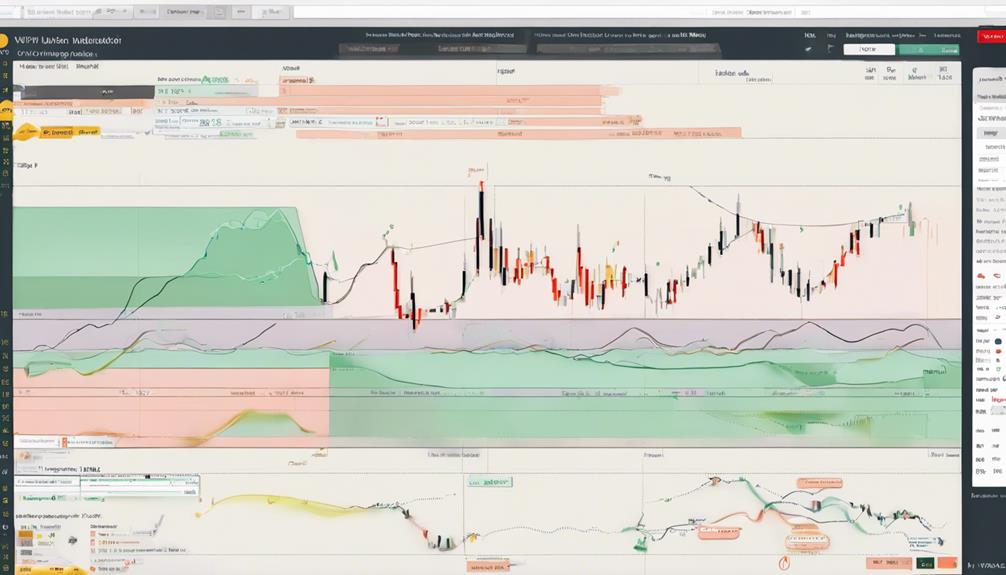
Mastering the Relative Volatility Index (RVI) involves delving into a specialized volatility indicator that provides insights into the direction of volatility within a defined timeframe. RVI is designed to analyze the relative volatility concerning price movements, offering traders signals to confirm trends and breakouts.
By assessing the relationship between volatility and price action, RVI aids in making informed decisions on when to buy or sell. When combined with other technical analysis tools, RVI can enhance market risk assessment strategies by providing a comprehensive view of market dynamics.
Traders can benefit from utilizing RVI to gain a deeper understanding of market volatility trends, enabling them to adapt their trading strategies accordingly. Overall, mastering RVI empowers traders to navigate the complexities of the market by leveraging the information provided by this valuable volatility indicator.
Top Strategies for Volatility Trading
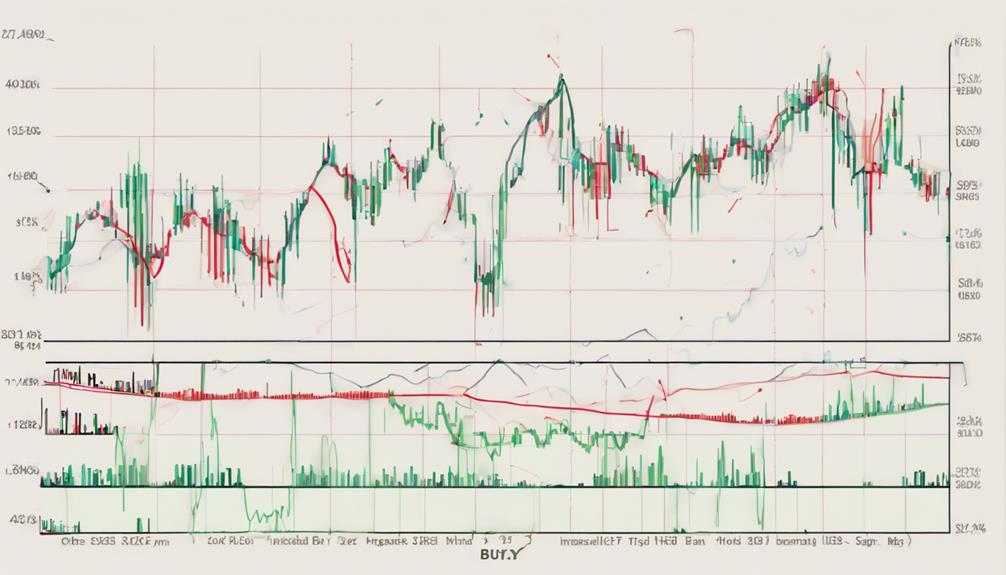
Exploring diverse volatility trading strategies is essential for traders seeking to optimize their market positions and capitalize on price fluctuations efficiently. To excel in volatility trading, consider the following strategies:
- Straddle: This strategy involves buying call and put options simultaneously to profit from significant price movements. Traders anticipate a sharp increase or decrease in the underlying asset's price.
- Strangle: Involves buying out-of-the-money call and put options to capitalize on high volatility. Traders use this strategy when they expect a substantial price movement but are uncertain about the direction.
- Iron Condor: Combines selling options with limited risk to benefit from low volatility. This strategy is effective in stable markets where the price is not expected to fluctuate significantly.
- Butterfly Spread: Combines bull and bear spreads for limited risk exposure in volatile markets. Traders use this strategy when they anticipate moderate price movement but want to limit potential losses.
Conclusion: Key Volatility Indicator Tips
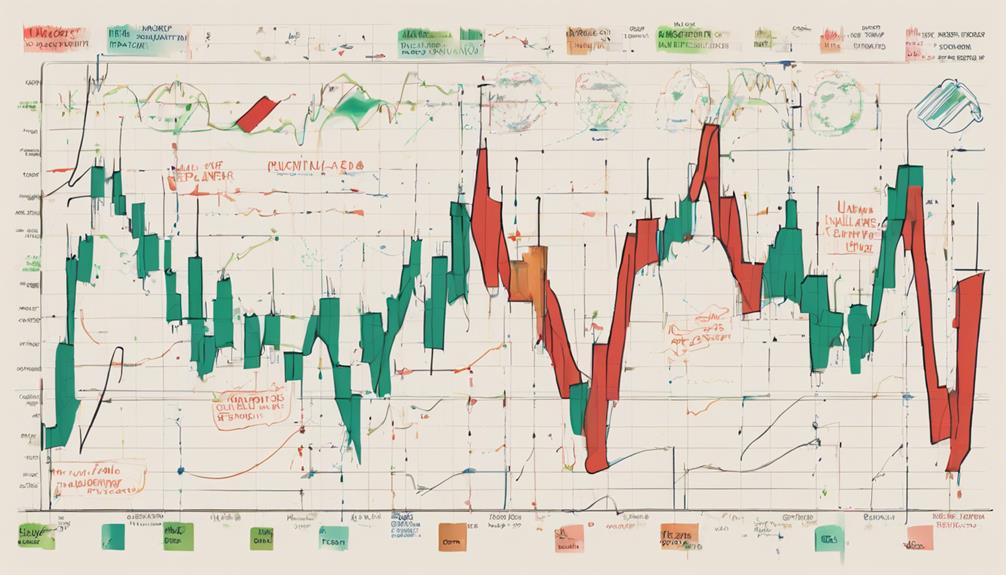
To master effective trading strategies in volatile markets, understanding and utilizing key volatility indicators is paramount for informed decision-making and risk management. Volatility indicators such as Bollinger Bands, Average True Range (ATR), and the Volatility Index (VIX) play a crucial role in monitoring market conditions and assessing potential risks. By incorporating these indicators into trading analysis, traders can gain valuable insights into price movements, trend reversals, and overall market volatility.
Utilizing a combination of volatility indicators, such as Keltner Channel and Donchian Channels, can further enhance trading strategies by providing a comprehensive view of market dynamics. By learning how to interpret and apply these indicators correctly, traders can improve their decision-making processes and increase the likelihood of successful outcomes.
Effective utilization of volatility indicators not only aids in identifying trading opportunities but also helps in implementing risk management strategies to protect capital in uncertain market environments. In conclusion, mastering key volatility indicators is essential for navigating volatile markets with confidence and precision.
What Are Some Easy-to-Follow Guides for Using Technical Indicators to Measure Market Volatility?
When it comes to measuring market volatility, it’s crucial to use the best market volatility indicators to make informed decisions. Some easy-to-follow guides for using these indicators include analyzing Bollinger Bands, interpreting the Average True Range (ATR), and utilizing volatility indices like the VIX.
Frequently Asked Questions
What Is the Best Indicator to Detect Volatility?
The Average True Range (ATR) indicator is widely regarded as one of the best tools for detecting volatility in the market. ATR measures price volatility over a specific period, helping traders make informed decisions.
What Is the Best Way to View Volatility?
Viewing volatility involves analyzing indicators like Average True Range (ATR) and Bollinger Bands, essential for understanding market fluctuations. Monitoring these indicators aids in risk assessment, identifying entry/exit points, and adapting trading strategies.
What Is the Best Volatility Indicator in Tradingview?
One of the most esteemed volatility indicators available on TradingView is Bollinger Bands, devised by John Bollinger in the 1980s. This tool, with its dynamic bands around a moving average, aids traders in recognizing volatility shifts and potential price trends.
What Is the Best Options Strategy for Volatility?
The best options strategy for volatility is the long straddle, involving simultaneous purchase of a call and put at the same strike price and expiration. It benefits from significant price movements, making it ideal for high volatility environments.
Conclusion
In conclusion, understanding volatility indicators is crucial for effective trading strategies. By mastering these indicators, traders can make informed decisions based on market volatility, ultimately improving their chances of success.
While some may argue that relying solely on indicators may limit flexibility, it is important to remember that they are just tools to aid in decision-making, not definitive predictions. Utilizing a combination of indicators and market analysis can lead to more well-rounded trading approaches.


